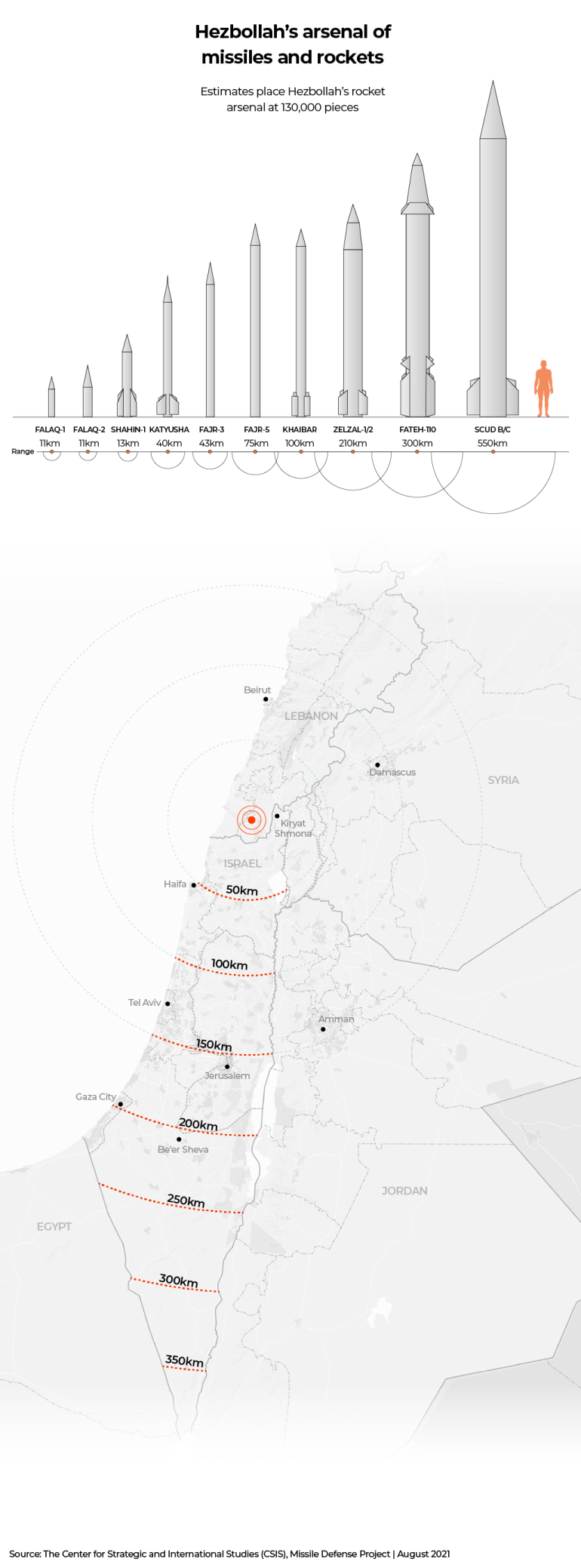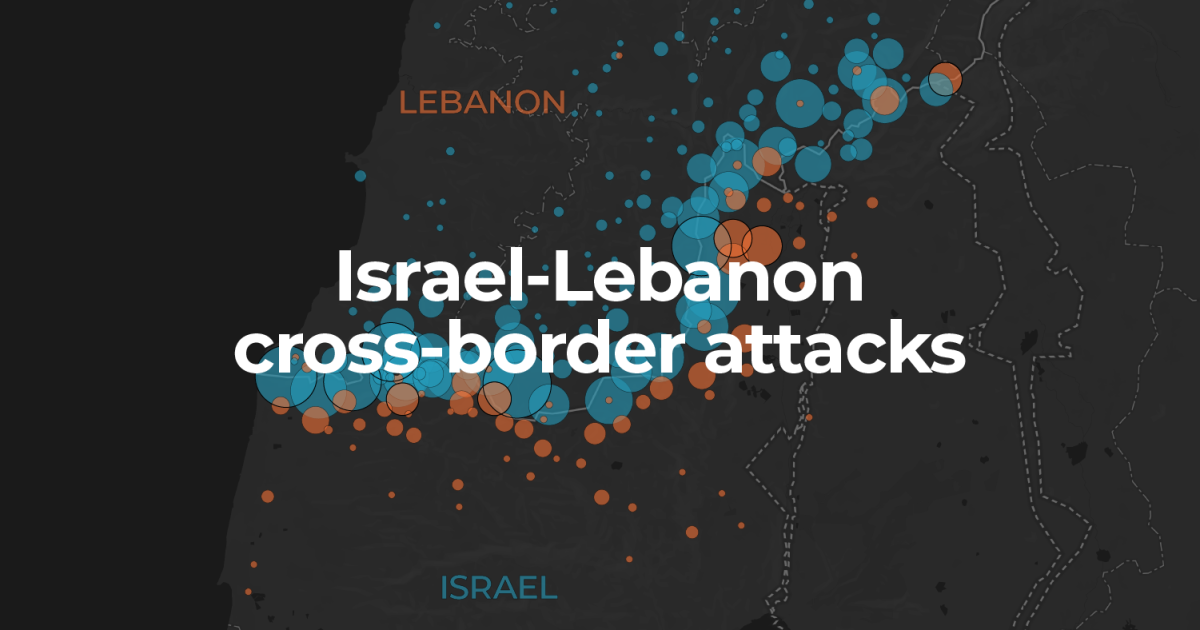As Israel continues its seventh-month war against Gaza, about two hours north, it is waging a parallel war along the border with Lebanon that threatens a larger regional conflict.
Since October 8, when Hezbollah – a Shiite armed group and political party backed by Lebanese Iran – launched attacks on Israel in solidarity with the Palestinian people, Israel has attacked them nearly 4,000 times along the 120 km border.
Hezbollah was founded in 1982 to combat the Israeli invasion and occupation of southern Lebanon. In 2006, the group fought a 34-day war that was widely viewed as a strategic and military failure by Israel.
Hezbollah chief Hassan Nasrallah has not declared all-out war on Israel but said his troops are not afraid to engage in it.
Hezbollah says its military operations against Israel will continue until Israel’s assault on Gaza ends. In response, Israeli leaders vowed to expel Hezbollah from southern Lebanon, albeit by force.
The attacks
According to the Armed Conflict Location and Event Data Project (ACLED), Israel, Hezbollah and other armed groups in Lebanon carried out at least 4,733 attacks across the border from October 7, 2023 to March 15, 2024.
Israel carried out about 83 percent of these attacks, totaling 3,952 incidents, while Hezbollah and other armed groups were responsible for 781 attacks.
About 65 percent of all attacks were artillery or rocket attacks, 25 percent were air or drone strikes, and the remaining 10 percent involved armed clashes, destruction of property, remote-controlled explosive devices or improvised explosive devices (IEDs).
In addition to Hezbollah – which bore the brunt of the hostilities – other notable forces involved in attacks against Israel include Lebanon’s al-Fajr Forces and the Amal Movement, as well as Hamas’ Qassam Brigades and the al-Quds Brigades of Islamic Jihad, both armed wings of Palestinian groups present in Lebanon.
Israel has attacked these places in southern Lebanon most frequently:
- Aita al-Shaab – 190
- Ras al-Naqoura – 154
- Hula – 143
- Tayr Harfa – 139
- Alma ash-Shaab – 134
Groups from Lebanon most frequently attacked these locations in northern Israel:
- Kiryat Shmona – 62
- Pearl – 56
- Shetula – 43
- Shebaa Farms – 43
- Aramsha – 39
Timeline of attacks
Israeli jets and drones have struck targets across Lebanon and neighboring Syria with impunity for months.
According to ACLED, Hezbollah and other armed groups carried out an average of five attacks on Israel per day over the past six months, while Israel carried out five times as many, about 25 attacks per day, on Lebanon, according to ACLED.
ACLED also recorded at least 137 interceptions of Hezbollah missiles by Israel and eight interceptions of Israeli drones or missiles by Hezbollah.
On October 12, the Israeli military announced that a reserve soldier had been killed in a Hezbollah anti-tank missile attack.
The next day, on October 13, Israeli forces killed Reuters journalist Issam Abdallah and injured six other reporters, including two from Al Jazeera, while filming cross-border shelling.
A UN investigation found that Israeli soldiers fired two 120mm cartridges from a Merkava tank at the group of “clearly identifiable journalists” in violation of international law.
A week-long ceasefire came into effect in Gaza on November 24th. During this period, ACLED recorded at least nine attacks by Israel on Lebanon, with no attacks recorded from the Lebanese side.
On January 2, a suspected Israeli drone strike killed Saleh al-Arouri, Hamas’ deputy political leader, along with six others in Beirut.
The killing of al-Arouri appeared to prompt a change in Hezbollah’s approach when it targeted the Meron air base on January 6 with 62 rockets of various types.
On February 26, Israeli warplanes carried out three airstrikes on the village of Buday near Baalbek, a Hezbollah stronghold in the Bekaa Valley – the first time Israel has attacked eastern Lebanon since October 7.
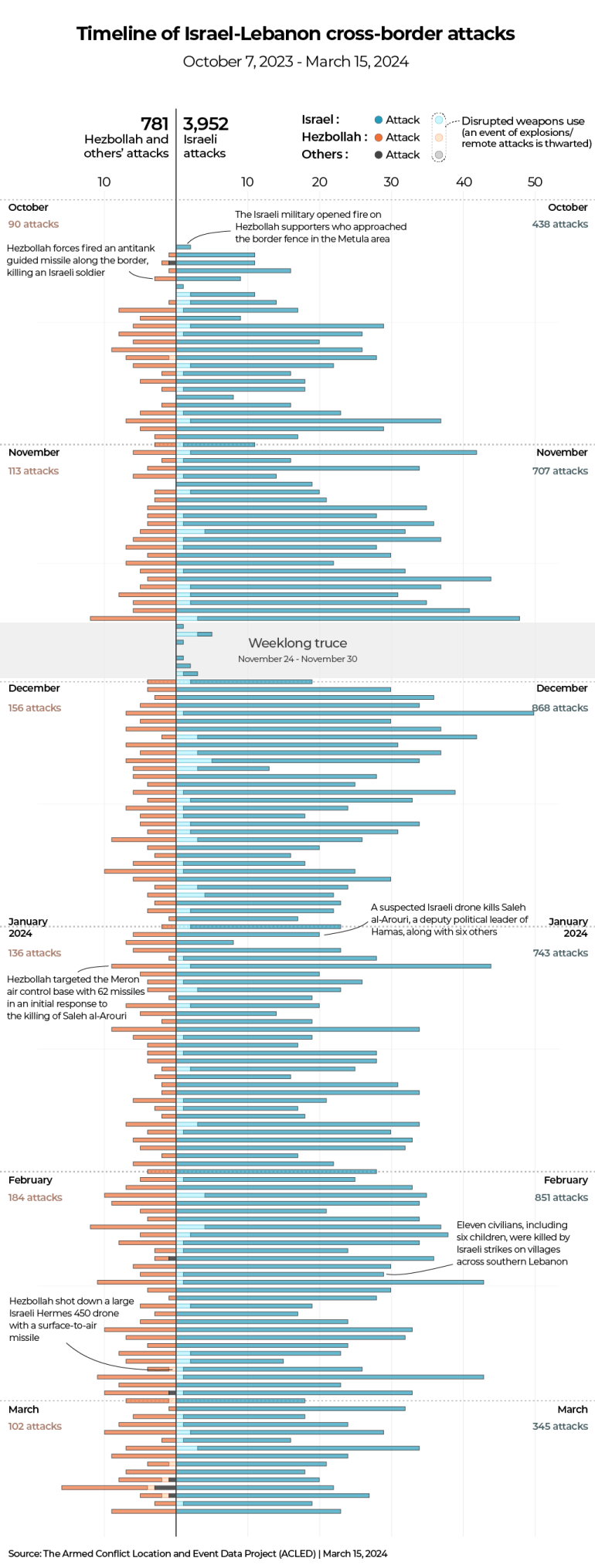
368 people killed
Using local media reports and statements from Hezbollah and other armed groups, Al Jazeera has compiled a list of 368 people killed in Israeli attacks on Lebanon between October 8 and March 31.
Israeli strikes have killed at least 295 fighters from Hezbollah and other armed groups in Lebanon in the past six months, as well as about 73 civilians, including children, medics and journalists.
On February 14, two Israeli airstrikes on towns in southern Lebanon killed at least ten civilians, including seven members of the same family, including a child.
Hezbollah’s rocket fire has killed around a dozen Israeli soldiers and half as many civilians.
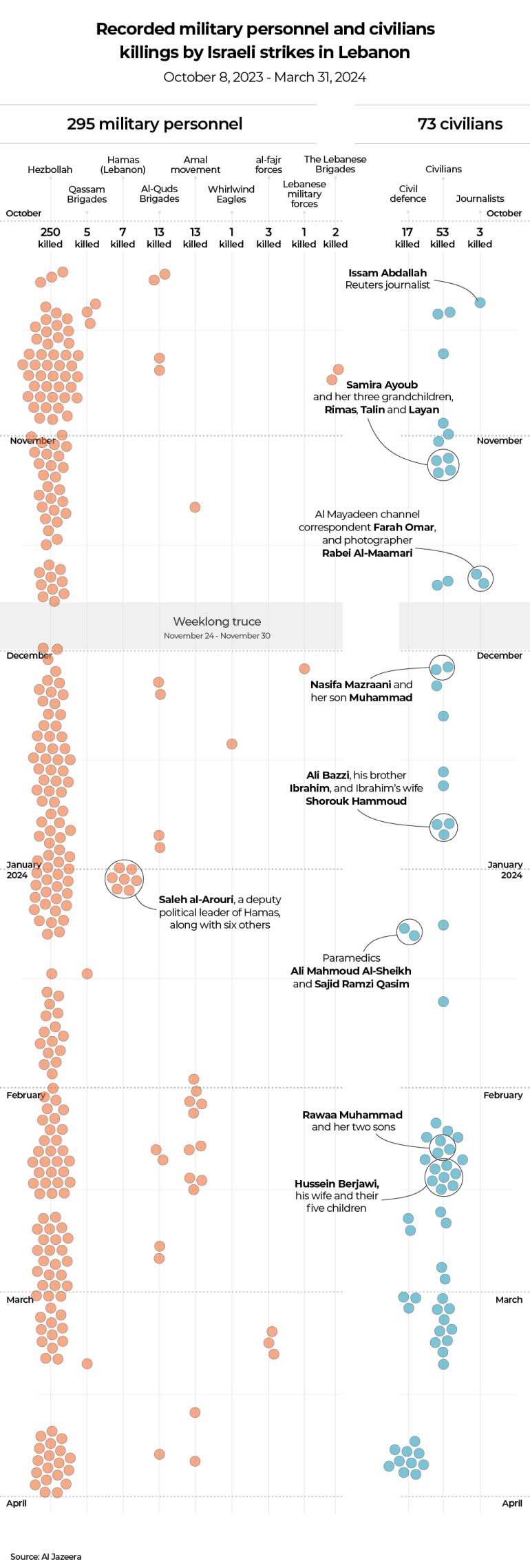
Tens of thousands displaced
According to the International Organization for Migration (IOM), more than 90,000 people have been displaced by the fighting in southern Lebanon.
The vast majority (96 percent) of displaced people come from three areas along Lebanon’s southern border: 71 percent from Bint Jbeil, 14 percent from Marjayoun and 11 percent from Tire.
The Southern Government Council estimates that around 700 housing units were destroyed and more than 10,000 damaged by Israeli attacks, particularly in Dhayra and Blida. In addition, Israeli strikes destroyed dozens of vehicles as well as water, electricity and communications infrastructure.
On the Israeli side, residents of 28 towns and villages within 2 km (1.2 miles) of the border were ordered to evacuate.

Israel’s Arsenal
Israel has the most advanced missiles in the Middle East and produces many of them domestically, but most of its precision-guided missiles come from the United States.
According to the Center for Strategic and International Studies (CSIS), a majority of Israel’s capabilities are short-range tactical systems, including the Popeye, Extra and Gabriel missiles.
Israel’s long-range missiles include the Jericho 2 and Jericho 3 ballistic missiles with a range of 1,500-3,500 km and 4,800-6,500 km, respectively.
Although Israel does not officially recognize it, it is believed to have at least 90 nuclear weapons.

To counter incoming rockets and missiles, Israel deploys three integrated air defense systems: Iron Dome (short range), David’s Sling (medium range) and Arrow (long range).
The Iron Dome was originally intended to provide city-sized coverage against missiles with a range between 4 and 70 km (2.5 to 43 miles), but experts say that has been expanded.
David’s Sling, manufactured by Israeli arms giant Rafael, can intercept rockets and missiles at a range of 40-300 km (25-186 miles), while the Arrow, led by the Arrow 3 interceptor, has an estimated flyout range of up to 2,400 km (1,491 miles).
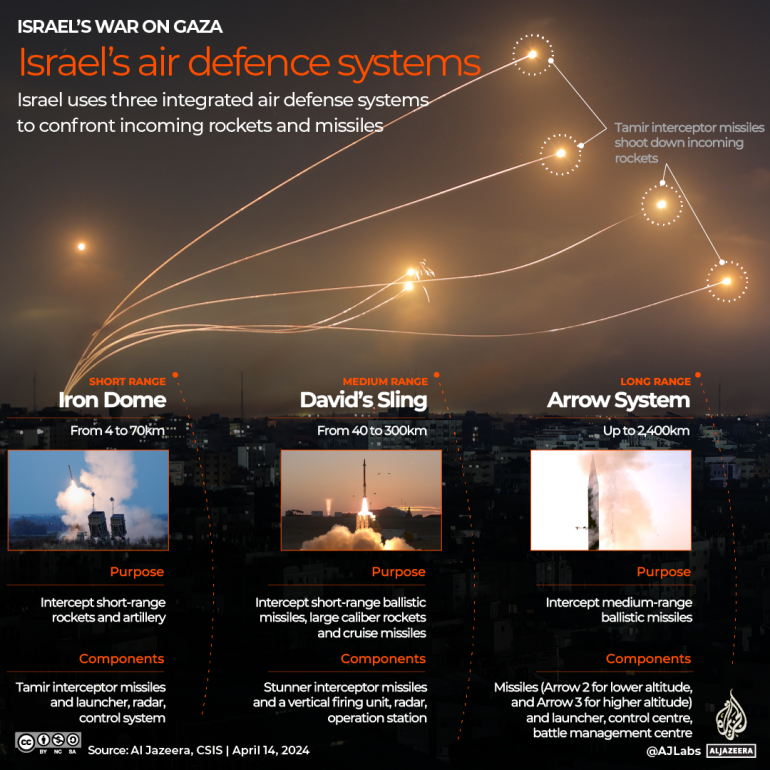
Hezbollah’s arsenal
Hezbollah is considered one of the most heavily armed non-state actors in the world and its missile arsenal is estimated to number 130,000, according to CSIS.
On October 19, Israel’s Institute for National Security Research released estimates of Hezbollah’s missile and drone arsenal.
Hezbollah reportedly had 40,000 Grad rockets with a short range of 15 to 20 km (9 to 12 miles).
An increase is the 80,000 long-range missiles, including the Fajr 3 and Fajr 5 ballistic missiles, with a range of 100 km (62 miles).
Finally, there are about 30,000 Zelzal or Fateh-110 rockets with a range of 200-300 km (124-186 miles) – the longest-range weapons in Hezbollah’s inventory that can reach southern Israel.
